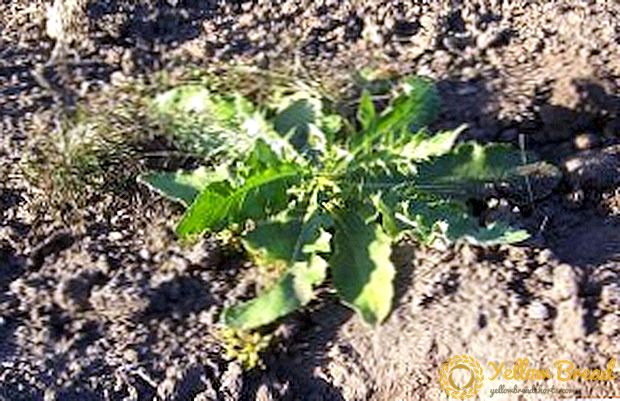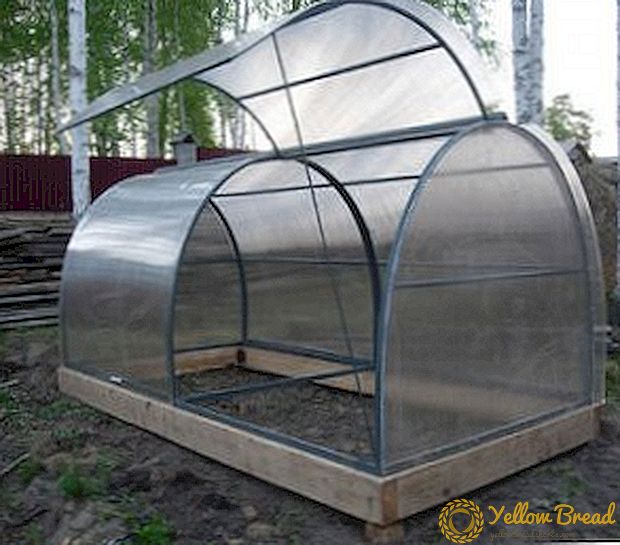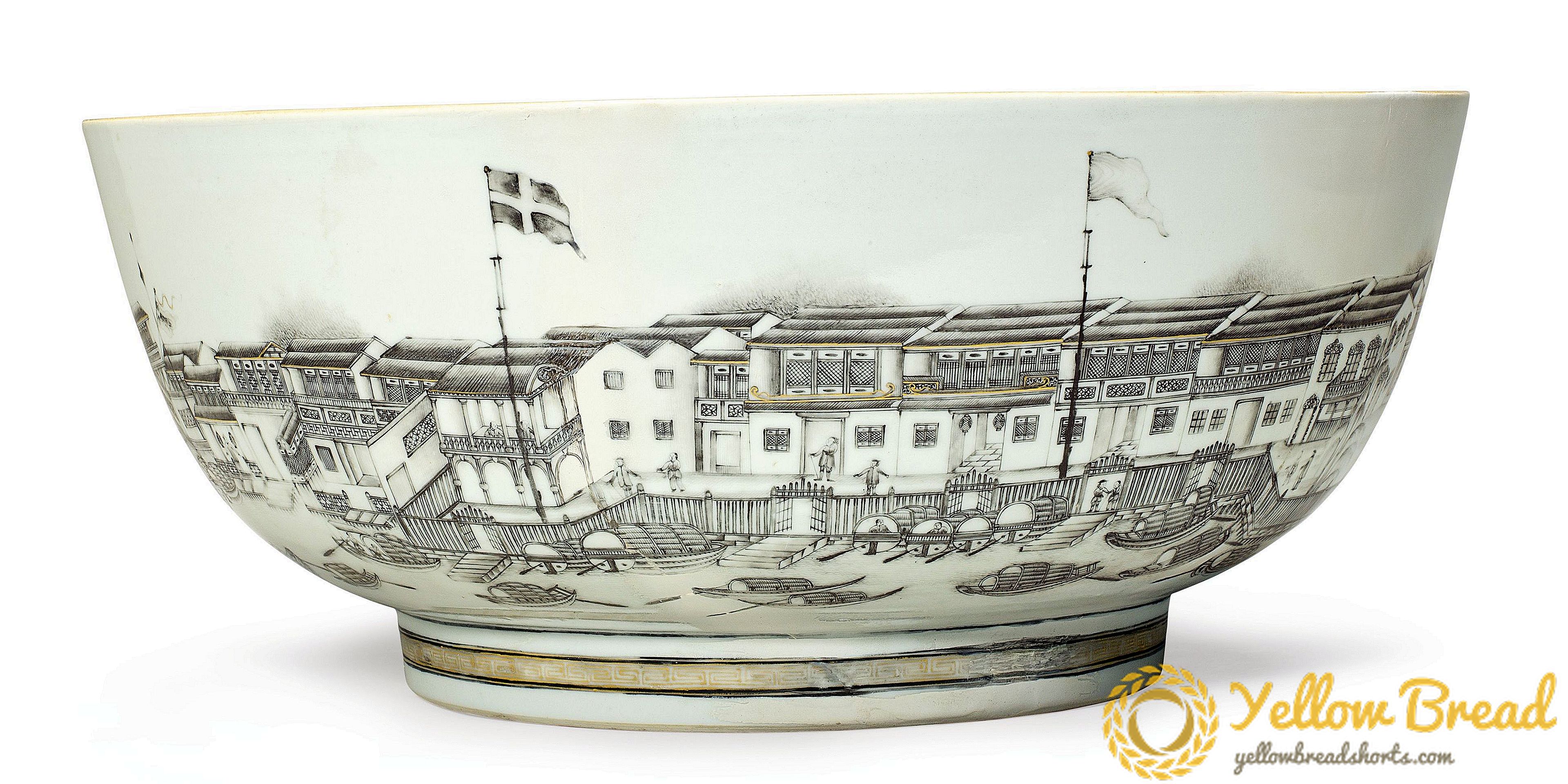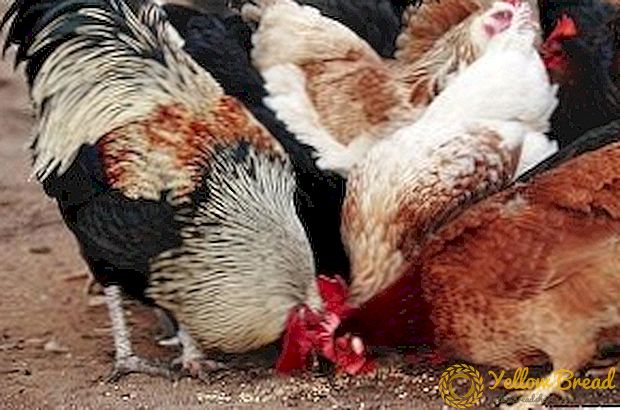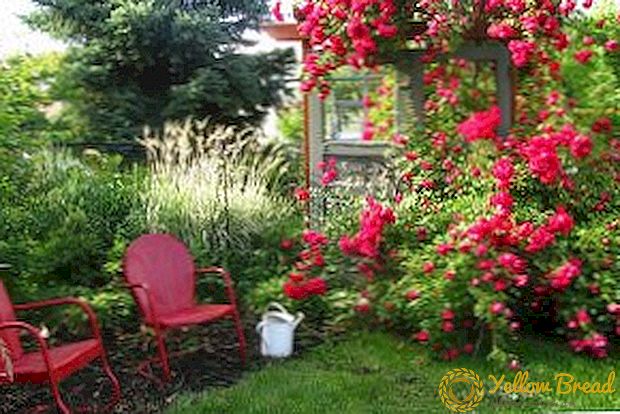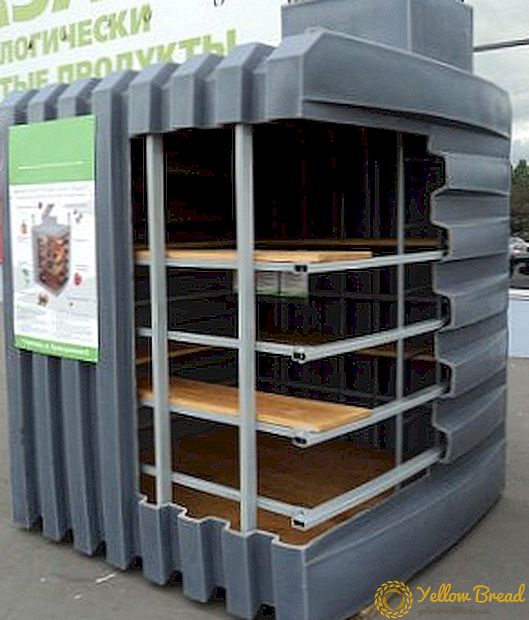 Summer residents, who prefer to grow vegetables for the future and make conservation, are always faced with the problem of long-term storage of provisions. Without a cellar here is not enough. However, not everyone has the time and ability to build it independently, and you need to resort to the help of specialists. Recently, ready-made plastic cellars for summer cottage are increasingly popular. They are convenient, easy to maintain and avoid many problems, such as mold, fungi, harmful microorganisms, rodents and insects, for example. Rate the pros and cons of such cellars, learn how to choose them and how to mount, you can read our material.
Summer residents, who prefer to grow vegetables for the future and make conservation, are always faced with the problem of long-term storage of provisions. Without a cellar here is not enough. However, not everyone has the time and ability to build it independently, and you need to resort to the help of specialists. Recently, ready-made plastic cellars for summer cottage are increasingly popular. They are convenient, easy to maintain and avoid many problems, such as mold, fungi, harmful microorganisms, rodents and insects, for example. Rate the pros and cons of such cellars, learn how to choose them and how to mount, you can read our material.
- Purpose
- The main advantages and disadvantages of the plastic cellar
- Benefits
- disadvantages
- How to choose a design
- Installation of a plastic cellar
- Choosing a place for the "cube"
- Installation rules
- Tips and tricks
- Popular manufacturers
Purpose
Any cellar is primarily intended for the storage of food. It should preserve certain conditions that extend the keeping quality of agricultural products:
- lack of daylight;
- constant low temperature;
- high humidity;
- Fresh air.
The main advantages and disadvantages of the plastic cellar
Before you buy a plastic cellar, you need to weigh the pros and cons, as well as read the reviews of people who already use such a tank, estimate the cost of installation and maintenance.
Benefits
The finished plastic cellar for the dacha is a box with an average wall thickness, an airtight lid, shelves and a ladder. Most often found in the form of cubes with dimensions of 1.5 × 1.5 × 1.5 m or 2 × 2 × 2 m. Mass - about 700-800 kg (depending on the design and manufacturer). However, today their choice is great, and wishes about the size and shape can be taken into account for each customer. There are round, oval, square, rectangular designs. 
Among the advantages of plastic caisson are the following:
- possibility of installation in any place - under the house, garage, ancillary and outbuildings;
- quickly mounted and installed;
- does not require additional work on the arrangement, since all the shelves, stairs will already be included;
- with proper installation, the temperature and humidity will remain constant in the box, there should not be any jumps;
- Ready cellar suitable for areas with high groundwater and any soil;
- proper installation provides high-quality ventilation;
- has protection against microorganisms and rodents;
- does not absorb smells and does not pass moisture;
- no corrosion;
- the insides are made of food-grade plastic, the shelves and the floor are made of wood (they can also be made of plastic);
- easy to clean and disinfect;
- service life - 50 years;
- simple care - once or twice a year to wash the walls and floor with detergents.

disadvantages
Present in the cellar of plastic and a few drawbacks:
- high price - the cost of a caisson costs about 30-50% more than the equipment of a conventional basement, and installation costs are also needed. In general, the cost of the finished tank will be two to three times higher than that of a conventional brick or concrete cellar;
- the most common are cubic tanks, which is not always convenient for the summer resident;
- the complexity of the installation work;
- the complexity of the installation on the site with ready-made buildings - it is not always possible to drive equipment for digging the pit;
- standard ventilation system. If you plan to store a large amount of vegetables, you will need to re-equip it, and this will already break the tightness of the caisson;
- Poor installation can lead to the fact that in the spring the plastic container will be squeezed out by groundwater.

How to choose a design
There are two types of caissons:
- Made of plastic.
- Made of fiberglass.
- The caisson should be made of high quality and from environmental materials, with the purchase should check the availability of documents, certificates, warranty obligations, GOSTs, etc.
- Installation, as well as the choice of a place for installation, must be entrusted to specialists who, after inspecting the site, suggest the most suitable place to place the caisson, measure the groundwater level to make proper reinforcement, suggest the most suitable design. It is better if one firm will be engaged in the sale of the cellar and its installation. Therefore, when choosing an implementer, be sure to ask him if he provides installation and installation services.
- If you are suitable in size, then you can purchase a ready-made plastic cube-shaped storage. If desired, its shape and size can be ordered, but this will significantly increase the price of the tank.

Installation of a plastic cellar
Installation of plastic storage consists of four main steps:
- Digging the trench required size.
- Installing a concrete (reinforced concrete) slab or flooding the bottom with concrete.
- Setting the container on the stove, fixation with special devices.
- Sleeping with soil and sand mixed with cement.
Choosing a place for the "cube"
A prerequisite for choosing a place under the "cube" is the study of soils and the availability of communications. This is necessary both in order to choose the most optimal place and in order for installation specialists to know what equipment they need for installation. It is advisable to study in detail the site plan.
Installation rules
The pit must be dug 0.5 m wider and longer than the container. If there is no possibility of an excavator entrance, then you will need to dig it manually.  As a rule, the cellar is installed on a reinforced concrete slab previously placed in the pit. The slab must be perfectly level, for correcting you will need to measure the level. If there is no possibility to put the slab, then iron fittings are put on the bottom, which can then be reinforced with a 20-centimeter concrete screed.
As a rule, the cellar is installed on a reinforced concrete slab previously placed in the pit. The slab must be perfectly level, for correcting you will need to measure the level. If there is no possibility to put the slab, then iron fittings are put on the bottom, which can then be reinforced with a 20-centimeter concrete screed.
The container is attached to the slab with special slings. For example, you can lay metal cables at the bottom of the pit, then lay a slab on them, and secure the cellar with the remaining ends on both sides. So the design will be sustainable.
 Next, proceed to the interior decoration.It can easily be made independently, using the instructions from the manufacturer. It will be necessary to install light, ventilation, stairs, racks, boxes for fruits and vegetables.
Next, proceed to the interior decoration.It can easily be made independently, using the instructions from the manufacturer. It will be necessary to install light, ventilation, stairs, racks, boxes for fruits and vegetables.Tips and tricks
- Before you buy a ready-made cellar, ask what kind of cellars your neighbors in the area use, what problems they have, whether there is ground water nearby.
- If desired, the walls of the cellar can be further warmed. This can be done independently.
- Be sure to warm the lid of the cellar. For this suitable foam.
- But by "improving" the ventilation system is not recommended. Improper actions can lead to the fact that in a room with vegetables and preservation will be off the scale air humidity,which will serve as a source of condensate, mold, fungal plaque and other troubles.
- Do not chase for cheap. Too cheap cellars do not happen. Such proposals should be alarming.

Popular manufacturers
Today there is a wide selection of manufacturers of plastic cellars. However, the most popular are two:
- "Triton"
- "Tingard".
This cellar is made without seams, its walls are reinforced with stiffening ribs. The kit includes a caisson ladder made of metal, plastic shelves, lighting, ventilation system.
The price for the Tingard cellar and its installation starts at 150 thousand rubles. It is also a seamless construction, equipped with stiffeners. Wall thickness - 15 mm. The set includes wooden shelves, wooden flooring, metal stairs, light and ventilation.  The plastic cellar is an excellent alternative to conventional storage.It will be well stored products, because it does not pass moisture, maintains a constant temperature and well ventilated. However, all these conditions will be observed only when choosing a quality caisson and professional competent installation.
The plastic cellar is an excellent alternative to conventional storage.It will be well stored products, because it does not pass moisture, maintains a constant temperature and well ventilated. However, all these conditions will be observed only when choosing a quality caisson and professional competent installation.

